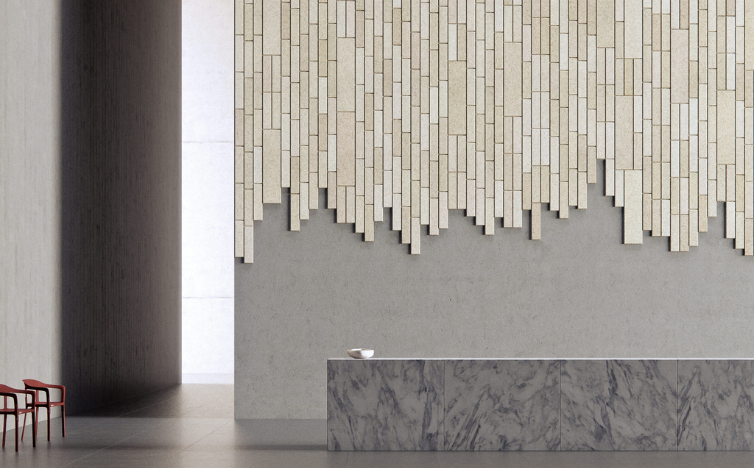Wood wool panels are versatile acoustic panels made from wood fibers. These panels are commonly used for soundproofing and enhancing the aesthetics of a space. They offer a natural, eco-friendly solution for controlling noise levels while adding a stylish touch to walls or ceilings. Due to their composition, they can effectively absorb sound, reduce echoes, and improve overall acoustics. In this article, we will learn how to choose the best wood wool panels for your space.
Benefits of Using Wood Wool Panels
Wood wool panels come with several benefits:
- Eco-Friendly: Made from renewable wood materials, they are sustainable and environmentally friendly.
- Sound Absorption: Wood fibers absorb sound waves, minimizing echoes and enhancing acoustic comfort.
- Durability: They are long-lasting and can withstand wear and tear.
- Aesthetic Appeal: Available in various textures and colors, they add a natural, elegant look to any space. Understanding these benefits can help you determine if wood wool panels are the right choice for your project.

1. Determine Your Space’s Acoustic Needs
Before selecting wood wool panels, evaluate the acoustic needs of the space:
- High Noise Levels: For rooms with high noise levels, such as open offices or conference rooms, choose panels with a higher Noise Reduction Coefficient (NRC).
- Moderate Noise Levels: For residential areas like living rooms or home theaters, standard wood wool panels may suffice.
- Minimal Noise Reduction: In spaces where soundproofing is not the primary concern, you can opt for thinner or decorative panels.
2. Choose the Right Thickness and Size
Wood wool panels come in various thicknesses and sizes:
- Thickness: Thicker panels provide better sound absorption. Choose a thickness that suits the noise reduction level you desire.
- Size: Consider the size of your walls or ceilings. Larger panels cover more area quickly, while smaller panels may offer more design flexibility. Measure the space accurately to determine the panel sizes you need.
3. Select the Appropriate Style and Design
Aesthetic appeal is a major advantages:
- Color: Choose a color that complements your room’s décor. Some wood wool panels can be painted to match specific themes.
- Texture: Panels come in various textures, from smooth to rugged. Decide whether you prefer a rustic or modern look.
- Pattern: Some panels offer unique patterns that add character to your space. Consider geometric or abstract designs for a stylish impact.
See Also: Eco-Friendly Acoustic Solutions: Choose Wood Wool Panels
4. Understand Fire Resistance and Safety Standards
These are often treated to meet fire safety standards:
- Fire Ratings: Look for panels with a good fire resistance rating, especially if you’re installing them in public spaces or commercial buildings.
- Compliance: Ensure that the panels meet local building and safety codes. Most manufacturers provide details on fire ratings and certifications.
5. Evaluate Installation Requirements
Consider the installation process before making a purchase:
- DIY or Professional: Some panels are easy to install on your own, while others may require professional installation.
- Surface Preparation: Check if the wall or ceiling needs to be prepped before installation.
- Mounting Options: Some panels use adhesive, while others require screws or clips. Choose the method that best fits your needs and space.
6. Consider Maintenance and Durability
Wood wool panels are relatively low-maintenance, but it’s good to consider:
- Cleaning: Choose panels that are easy to clean if they are in areas prone to dust or dirt.
- Longevity: Check the manufacturer’s warranty and durability ratings to ensure they last for years.
- Moisture Resistance: For spaces like bathrooms or kitchens, choose panels that can handle humidity and resist mold growth.
7. Cost Considerations and Budgeting
Determine your budget
- Quality vs. Cost: Higher-quality panels might cost more, but they usually offer better soundproofing and durability.
- Bulk Purchases: Some suppliers offer discounts for bulk purchases, so calculate the number of panels you need beforehand.
- Installation Costs: Include potential costs for professional installation if necessary.
8. Choosing the Right Supplier or Manufacturer
Selecting the right supplier is crucial:
- Reputation: Choose manufacturers with a good track record of producing quality panels.
- Product Variety: Go for suppliers that offer a range of styles, thicknesses, and colors.
- Customer Support: Look for a supplier who provides excellent customer service, including installation support and warranties.
Call us: Contact DeSound Soundproofing Expert in Dubai For Soundproofing: +971 56 231 4204
Conclusion
Choosing the right wood wool panels involves understanding your acoustic needs, selecting the appropriate design, and considering practical aspects like installation and maintenance. With the right panels, you can enhance both the sound quality and aesthetics of your space, creating a comfortable and visually appealing environment.

